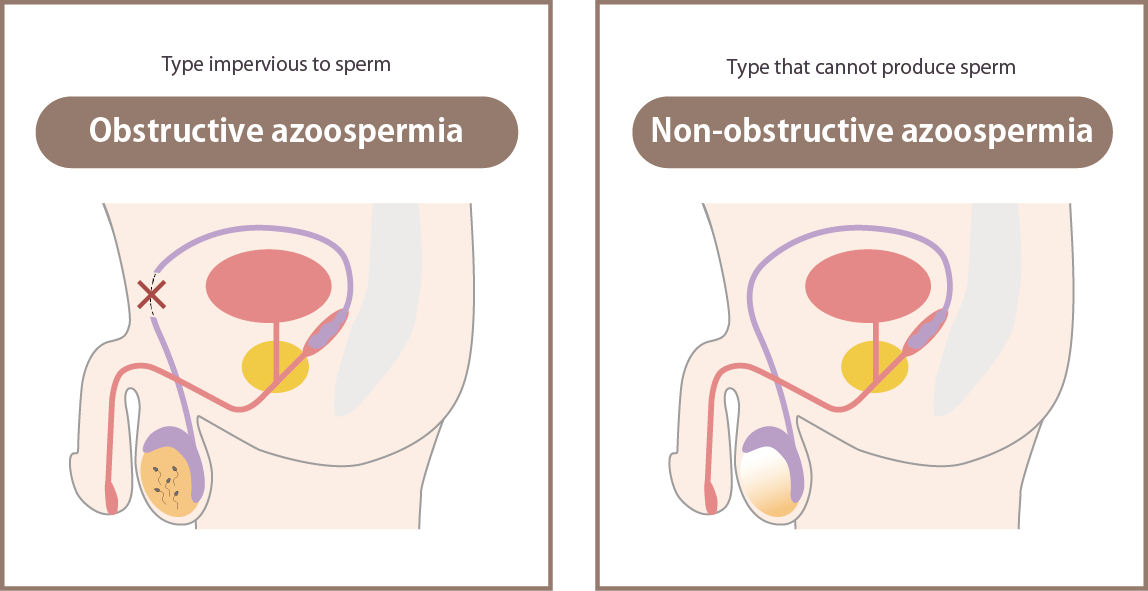Azoospermia, one of the most serious types of male infertility, is best treated with TESE (testicular sperm extraction.)
There are methods like traditional medicine to attempt to repair it, but this can take a long time, which you might not have if you and your partner are getting older.
There are two types of azoospermia.
There are two types of azoospermia: obstructive azoospermia, in which spermatogenesis is normal but both spermatogonia are obstructed and cannot pass sperm, and non-obstructive azoospermia, in which spermatogenesis is weak or absent on both sides and sperm cannot be produced.

Even if you have already been diagnosed with Azoospermia, even just a few sperm could be found in TESE, and with ICSI a fertilized oocyte could occur.
At our hospital, we are actively engaged in advanced medical treatments such as MD-TESE (Microscopic Testicular Sperm Extraction under a microscope).
In TESE an incision is made in the scrotum about 0.5 cm to 1.0 cm and a little tissue is collected from the seminiferous tubule.
In MD-TESE, the entire testis is observed under a microscope under general anesthesia, so that as many sperms as possible can be collected, which is our usual method.
The seminiferous tubules collected from the testes are selected for good condition with a high probability of sperm, and the embryologist spends hours searching for even one sperm in the tissue.
Even if only a few sperm that can be collected, ICSI (intracytoplasmic sperm injection) is performed using the sperm found.
Sometimes sperm can be frozen, but if the numbers are very small, the damage caused by freezing may prevent the sperm from being used next time.
At our hospital, we aim to fertilize in good condition by collecting oocytes and doing MD-TESE at the same time.
In particular, in the case of non-obstructive azoospermia with high FSH, there is no test to determine whether sperm can be reliably collected before surgery, and it is not possible to actually obtain sperm in TESE, but regardless, checking the testicles to find sperm is an important step in the fertility process if it is needed.
Effectiveness
Almost half of the patients who underwent TESE had sperm detected and became pregnant.
Even in cases of obstructive azoospermia or non-obstructive azoospermia, ICSI can be performed by TESE as long as sperm are found in the testis.
Risk
The testicles have an important role in secreting male hormones, and surgery may lower hormone levels.
Although recovery will occur to some extent over time, if both testicles are operated on at the same time, the possibility of physical problems due to an excessive decrease in male hormones cannot be ruled out.
For this reason, we perform surgery on only one side of the testicle.
Usually, the surgery can be performed on a day trip, but hospitalization is also possible upon request when the patient is not feeling well.
We are also available 24 hours a day to respond to sudden postoperative changes.






